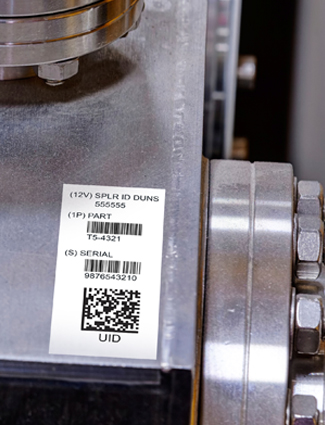Is Your Facility Fit for the Future?
03
February,
2023
3 MINUTE READ

The average life expectancy of a facility is estimated at 20 years. How can a business experience greater longevity? It's no secret that data lies at the heart of the fourth industrial revolution. The "Industrial Internet of Things" (IIoT) is massively growing, however, the information that flows from it can bring little value without the right analytics techniques as well as attention to safe responsibilities.
The Future is Near
Getting a facility in shape for a sustainable future is by no means an easy task. Nearly all decision-making is subject to company higher-ups as well as outside financial influencers and regulatory organizations. Progressive teams, however, are seeing the benefits as computers are increasingly enabling plants and other facilities to operate safely while maintaining ideal production levels. The right technology allows for areas of manufacturing and distribution to be able to keep up with buying demands and expectations. Along with these digital systems, having the right information on how to best operate safely and communicate efficiently is crucial.
Industrial conglomerate Honeywell aims to bring existing facilities to the next level of data-driven optimization. The company has "connected plant" services that through technology connect a company's assets and equipment to a cloud. Analytics and data monitoring of information that is gathered in that cloud are then examined by Honeywell and its partners. The idea is to help a company avoid critical asset failures and unplanned shutdowns. According to Honeywell, the connected plant technology requires minimal infrastructure and reduces maintenance costs through a dynamic communication system.
For example, to help meet more stringent global environmental health and safety standards, Honeywell optimizes its energy consumption while offering innovative technologies, said Yasuhiro Kinoshita, of Honeywell Transportation Systems in Japan. "We can monitor asset performance details and, for example, detect air leaks in the manufacturing units, which directly allows us to reduce energy usage and avoid excess cost," he said. Having this data readily available allows for quick communication and decision-making in a timelier manner. What also increases the longevity of Honeywell's offerings is that when new technology becomes available, systems can easily be upgraded.
Plan Ahead
Planning a sustainable future involves creating a network of like-minded individuals. There are core relationships facility management must build upon in using technology and continuing safe and responsible operations. Here are some simple ways to drive insight, transformation, and growth to meet evolving business needs.
 Develop Insight: Get guidance and education on technology for facility advancement. Learn, collaborate, and understand the impact the facility and company has on the industry. Identify principal risks and uncertainties that could affect performance, such as changes in regulations and standards. Define problems, and collaborate on solutions. Create a community that can work together to better understand the impact of infrastructure so safer, smarter, and more sustainable solutions can be found and implemented. Plan for emergencies, power outages, shutdowns, and other costly incidents through a risk assessment.
Develop Insight: Get guidance and education on technology for facility advancement. Learn, collaborate, and understand the impact the facility and company has on the industry. Identify principal risks and uncertainties that could affect performance, such as changes in regulations and standards. Define problems, and collaborate on solutions. Create a community that can work together to better understand the impact of infrastructure so safer, smarter, and more sustainable solutions can be found and implemented. Plan for emergencies, power outages, shutdowns, and other costly incidents through a risk assessment.- Encourage Transformation: Use insightful data to implement safety best practices, continuous improvement solutions, and hazard mitigation. Use metrics of safety excellence to reveal the answers on how to transform safety. Mitigate challenges for smoother progressions that allow operations to finish on time within scope and on budget as best as possible. Include plans for safety, such as new equipment and wearables for workers, as newer technology becomes available and processes change.
- Prepare for Growth: With insight and transformation in hand, prepare the company for growth and even more environmental health and safety connectedness. Use data for more informed decisions for growth and direction. Ensure workers have the tools necessary for new tasks, including safety equipment. Adapt technology and continue total facility communication to maximize business potential.
DuraLabel Resources
Companies can embrace new technologies and keep workers safe easily through consistent training and visual communication. Computerized systems can increase worker mobility and allow for instant, direct communication. This can allow for less safety oversight and more safety leadership. Achieve facility communication needs with visible safety signage for admittance/restricted areas, authorized personnel, 'Do Not Enter' messages, and more. Enhance blind spots and risk areas. Use floor marking for wayfinding and to highlight emergency access areas for improved visual workplace communication.
DuraLabel's free OSHA Signage Instant Action Guide can serve as instructional reminders for workplace and safety best practices in any facility. The guide can help users easily create OSHA/ANSI-compliant safety signs, choose the correct sign header with our simple flowchart, or assess their facility needs with our site inspection checklist. Get your free copy today. Give us a call today at 1-888-326-9244 and one of our safety professionals can guide you through the process.
Learn more about the 5s system with DuraLabel's free 5s Instant Action Guide. These tools also are an integral part of establishing important location and storage information. This guide can help optimize safety and improve efficiency.
Read Next:
How to Choose the Right Floor Marking Tape
RELATED RESOURCES

Last Line of Defense
Flame retardant coveralls only work if workers put them on before approaching the electrical circuit. ...
ReadInjury Tracking App Launched
OSHA's web portal to accept injury reports went live Aug. 1, but the site repeatedly has had technical ...
Read
Understanding Arc Flash: The Shocking Truth About Electrical Injuries
Electrical workers consider shocks as part of their job and normal, according to a study. However, it could ...
Read.png)






